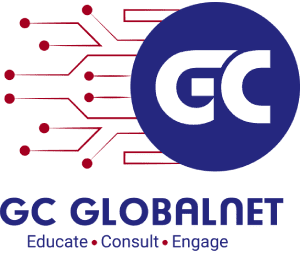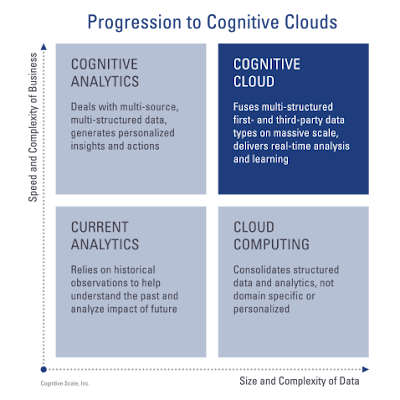Twitter Feed
Watson Crowdsources Cloud Computing
Recently I’ve been doing quite a bit of analysis work using the IBM Watson cognitive business platform. The really exciting thing about this opportunity is the way data can seem…
New Horizons® Delivers CloudMASTER®
For over 30 years, New Horizons has provided more than 30 million students with industry-leading technical training that delivers the most relevant and intuitive computer courses and certifications. They are…
See You At RSA Conference 2017!
JUST ANNOUNCED!! I am personally excited to be delivering the (ISC)² CCSP Two-Day Crash Course at RSA Conference 2017! “The current state of cybersecurity means there are many opportunities for the…
#KnowYourData: The Key to Business
Last week’s Strata-Hadoop conference in New York, NY was showcase of how big data is redefining business. Every company, every demonstration and every conversation highlighted how data is driving the…
A New Chapter: “Cloud Musings en español”
Since May 2010, “Cloud Musings” has demonstrated, educated and celebrated the use of advanced technology in business. Specific subjects are sometimes varied, but cloud computing and cybersecurity seem to have…
Military Tips On Business Resiliency
Photo credit: Shutterstock A steel bar is resistant to stress and is capable of maintaining its form while bearing large loads. While steel is also known as one of the…
Meet Ameet Bakshi: The Insurance CloudMASTER®
Powered by Singapore-based Big Data start-up Crayon Data, BigData-MadeSimple.com tapped the insurance industry as being at the forefront of integrating cloud technology into their digital eco system. As stated in…
Understand The Language Of Data: Strata+Hadoop World and TAP
Our world is driven by data. It may speak in whispers, but it can also scream insight and information to those that understand it’s language. This is why I’ll be…
Transformative Training for Hybrid Cloud
Figure 1- Shawn Bolan, Technical Training Manager, New Horizons of Nebraska, https://www.linkedin.com/in/shawn-bolan-96b8a9103 In a recent CloudTech article multi-cloud, or hybrid cloud, strategy was heralded as “…transformative for businesses, allowing them…
Surviving the coming “Hackerpocalypse”
Photo credit: Shutterstock With all the excellent training available on television today, we are all now well prepared to deal with the coming Zombie Apocalypse. Our failure as a society…
According to the IBM Institute for Business Value the market will see a rapid adoption of initial cognitive systems. The most likely candidates have moved beyond descriptive and diagnostic, predictive and routine industry-specific capabilities. 70 percent of survey respondents are currently using advanced programmatic analytics in three or more departments. In fact, the widespread adoption of cognitive systems and artificial intelligence (AI) across various industries is expected to drive worldwide revenues from nearly US$8.0 billion in 2016 to more than US$47 billion in 2020.
The analyst firm IDC predictsthat the banking, retail, healthcare and discrete manufacturing industries will generate more than 50% of all worldwide cognitive/ AI revenues in 2016. Banking and retail will each deliver nearly US$1.5 billion, while healthcare and discrete manufacturing will deliver the greatest revenue growth over the 2016-2020 forecast period, with CAGRs of 69.3% and 61.4%, respectively. Education and process manufacturing will also experience significant growth over the forecast period.
th’s ability to replicate intuitive experiences provides a number of opportunities within sentiment analysis. With its ability to understand scenes and context, it can decipher how people are feeling based off facial expressions or voice stress levels.
- Need robust and simplified data classification processes in order to more easily deliver industry and business model specific value;
- Require the implementation of information technology security controls that are driven by data value and role based access control paradigms; and
- Leverage software applications that should be developed using ISO 27034 which is a multi-part standard on specifying, designing/selecting and implementing information security controls through a set of processes integrated throughout an organization’s Systems Development Life Cycle/s (SDLC).
( Thank you. If you enjoyed this article, get free updates by email or RSS – © Copyright Kevin L. Jackson 2016)
Cloud Computing
- CPUcoin Expands CPU/GPU Power Sharing with Cudo Ventures Enterprise Network Partnership
- CPUcoin Expands CPU/GPU Power Sharing with Cudo Ventures Enterprise Network Partnership
- Route1 Announces Q2 2019 Financial Results
- CPUcoin Expands CPU/GPU Power Sharing with Cudo Ventures Enterprise Network Partnership
- ChannelAdvisor to Present at the D.A. Davidson 18th Annual Technology Conference
Cybersecurity
- Route1 Announces Q2 2019 Financial Results
- FIRST US BANCSHARES, INC. DECLARES CASH DIVIDEND
- Business Continuity Management Planning Solution Market is Expected to Grow ~ US$ 1.6 Bn by the end of 2029 - PMR
- Atos delivers Quantum-Learning-as-a-Service to Xofia to enable artificial intelligence solutions
- New Ares IoT Botnet discovered on Android OS based Set-Top Boxes



